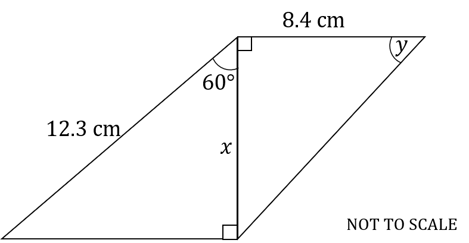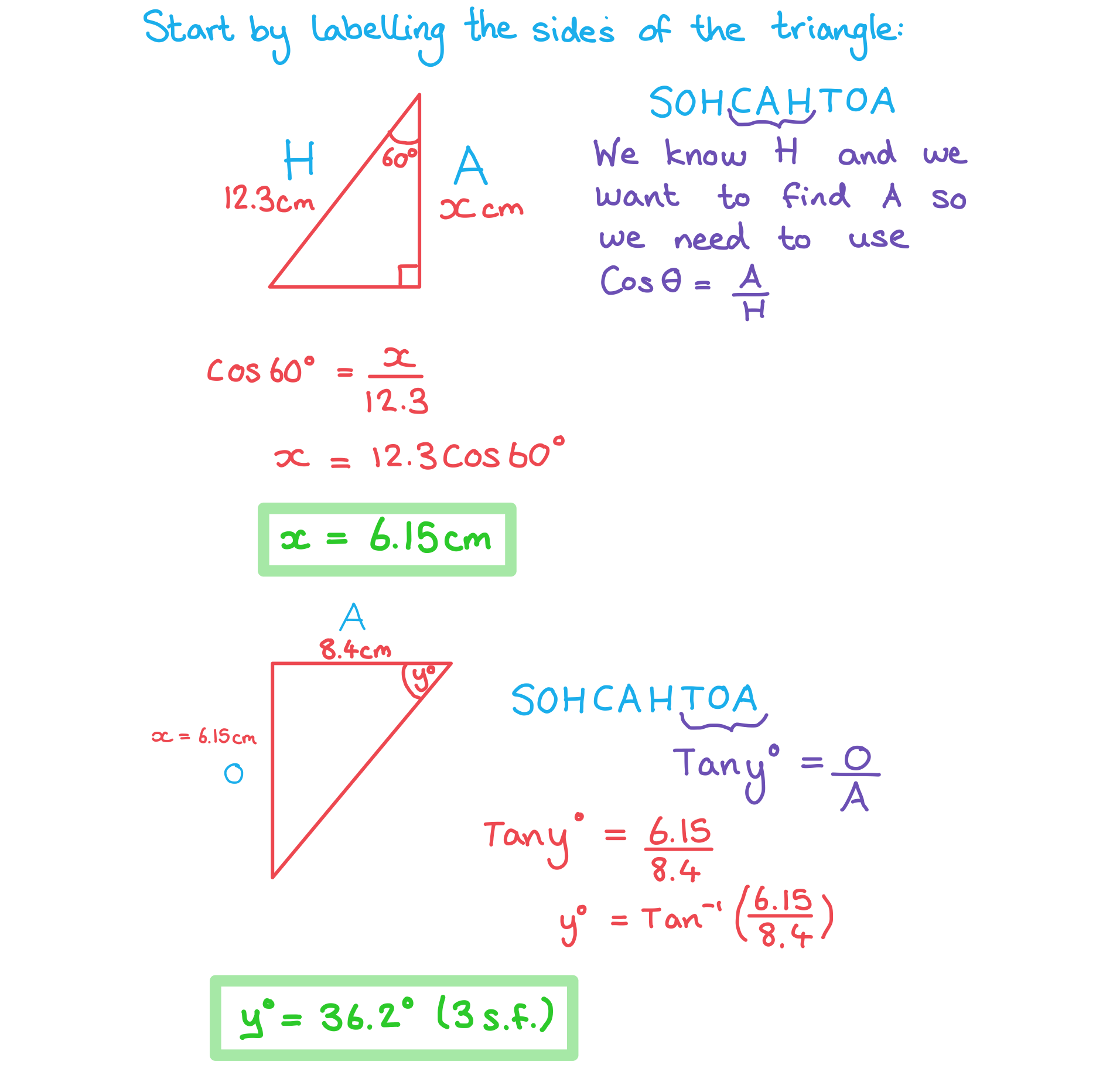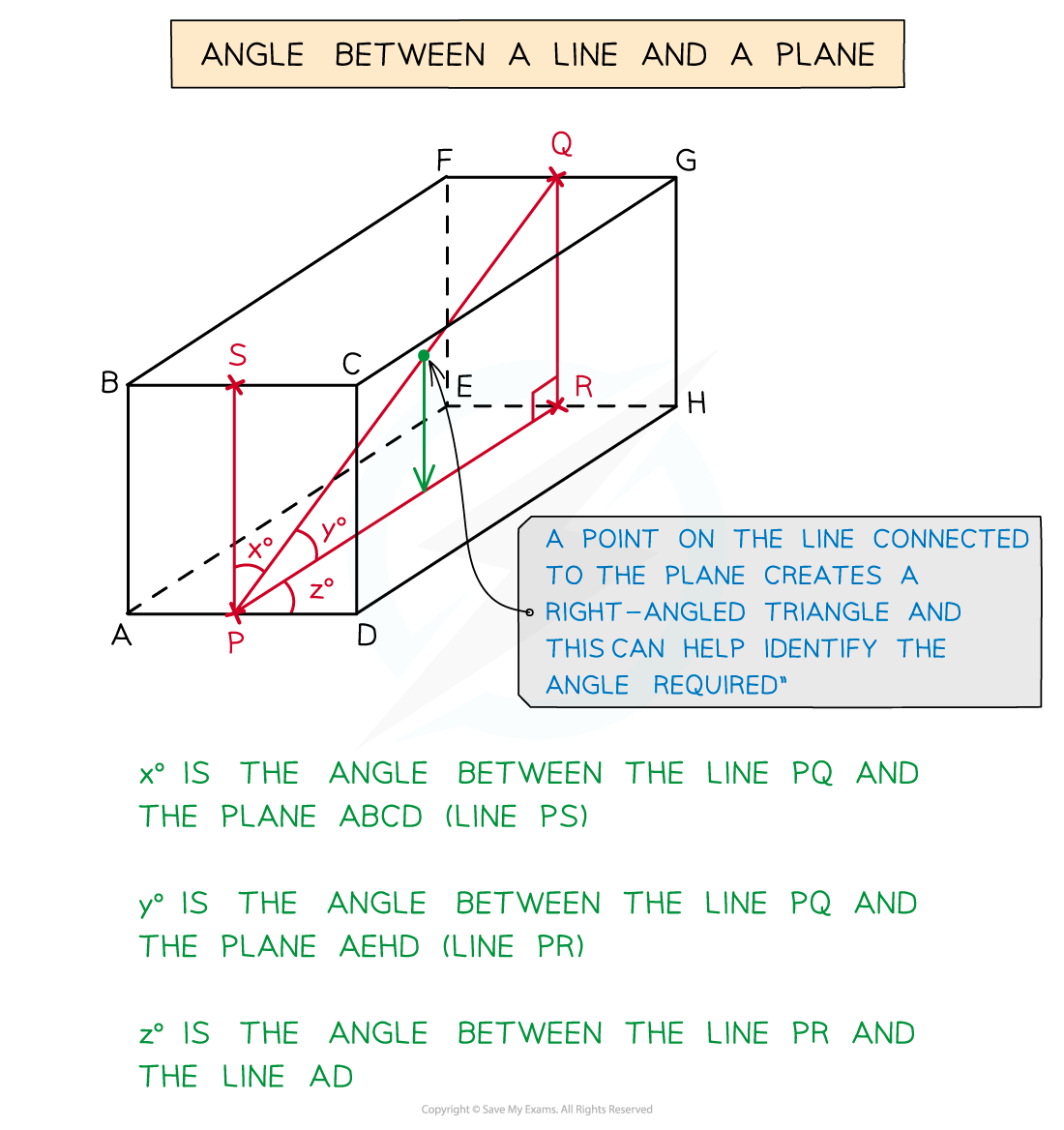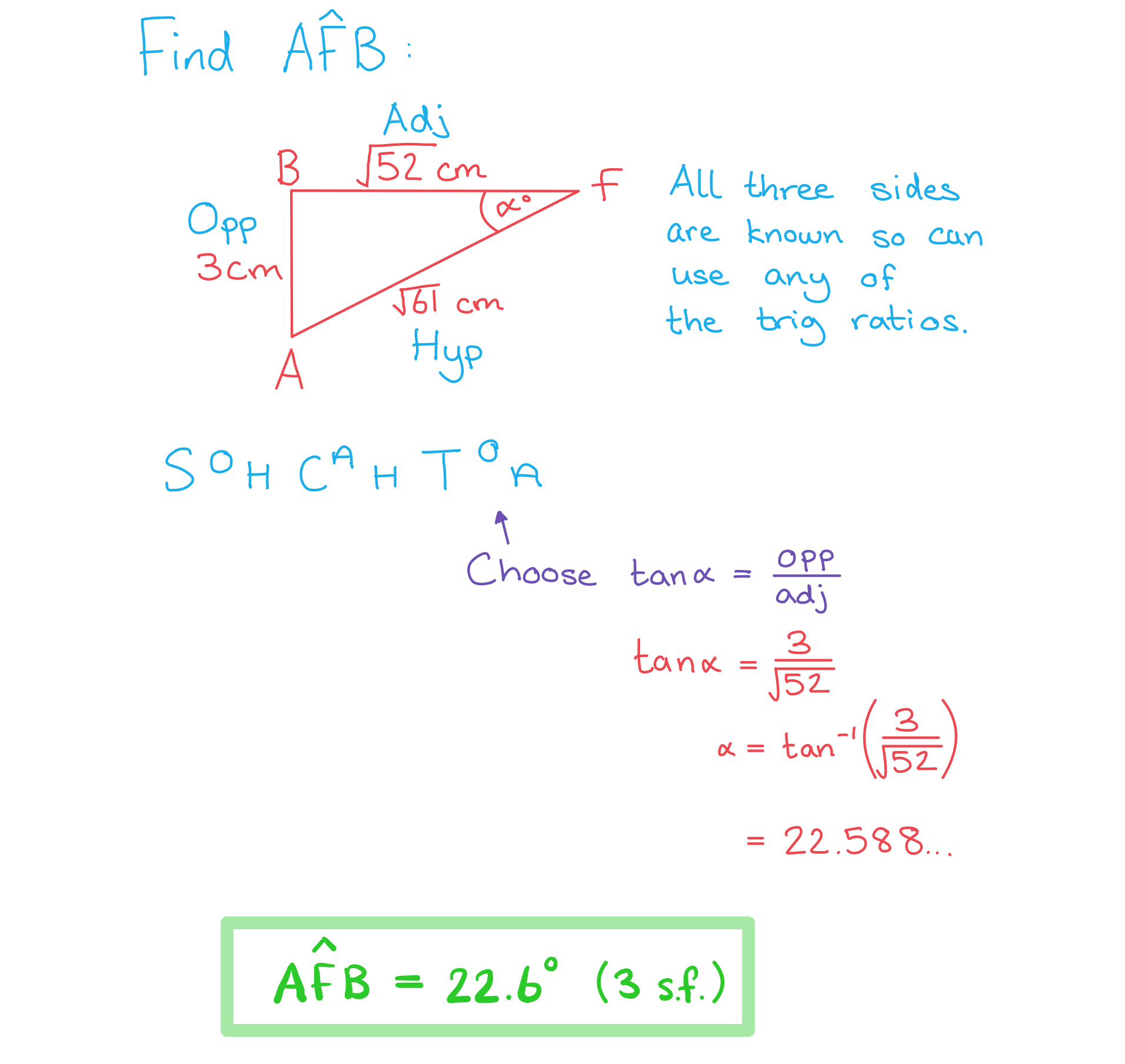Right-Angled Trigonometry
What is right-angled trigonometry?
- Right-angled trigonometry is the study of right-angled triangles
- In particular the relationships between their side lengths and angles
- Right-angled trigonometry includes two main components
- The Pythagorean theorem
- SOHCAHTOA
- You should already be familiar with right-angled trigonometry from your regular IGCSE Mathematics course
What is the Pythagorean theorem?
- The Pythagorean theorem (or Pythagoras’ theorem ) connects the side lengths in a right-angled triangle
- It only works for right-angled triangles!
- It says that for any right-angled triangle, the square of the hypotenuse is equal to the sum of the squares of the other two sides
- The hypotenuse is always the longest side in a right-angled triangle
- It will always be opposite the right angle
- The hypotenuse is always the longest side in a right-angled triangle
- If we label the hypotenuse c, and label the other two sides a and b, then
- This is not on the exam formula sheet, so you need to remember it
- This lets us find one side length if we know the other two side lengths
- To find the hypotenuse
- To find one of the other two sides
or
- To find the hypotenuse
- Pythagoras' theorem can also be used to prove that a triangle is (or isn't) right-angled
- If
is true for three side lengths
,
and
- then the triangle is right-angled
- If
is not true for three side lengths
,
and
- then the triangle is not right-angled
- If
What is SOHCAHTOA?
- SOHCAHTOA is a way to help remember the sine, cosine and tangent formulae for right-angled triangles
- These formulae only work for right-angled triangles!
- To use the formulae you must first label the sides of a right-angled triangle in relation to a chosen angle
- The hypotenuse, H, is the longest side in a right-angled triangle
- It will always be opposite the right angle
- If we label one of the other angles θ,
- the side opposite θ will be labelled opposite, O
- and the side next to θ will be labelled adjacent, A
- The hypotenuse, H, is the longest side in a right-angled triangle
- The SOHCAHTOA formulae are
('SOH')
('CAH')
('TOA')
-
-
- These are not on the exam formula sheet, you need to remember them
-
- You can use SOHCAHTOA to find
- an angle, if you know two side lengths
- a side length, if you know an angle and another side length
- Start by choosing the correct formula
- It needs to include two things you know as well as the thing you want to know
- Then substitute the values you know into the formula
- and solve for the missing value
- If finding an angle, you'll need to use
,
or
on your calculator
- Or use your knowledge of exact trig values where possible
- If finding an angle, you'll need to use
- and solve for the missing value

Exam Tip
- Make sure you know the formulae for the Pythagorean theorem and SOHCAHTOA
- They are not given to you on the exam formula sheet
- An exam question probably won't tell you to use the Pythagorean theorem or SOHCAHTOA
- But think about them whenever you see a right-angled triangle in an exam!
Worked example
A chocolate bar is in the shape of a triangular prism . The end of the chocolate bar is an isosceles triangle, where
and
. Point
is the midpoint of
. This information is shown in the diagram below.
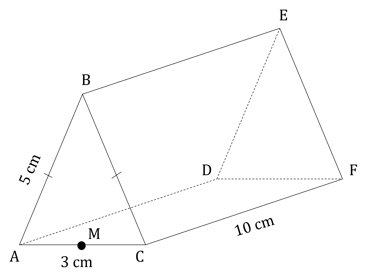
Calculate the length of BM, giving your answer correct to 3 significant figures.
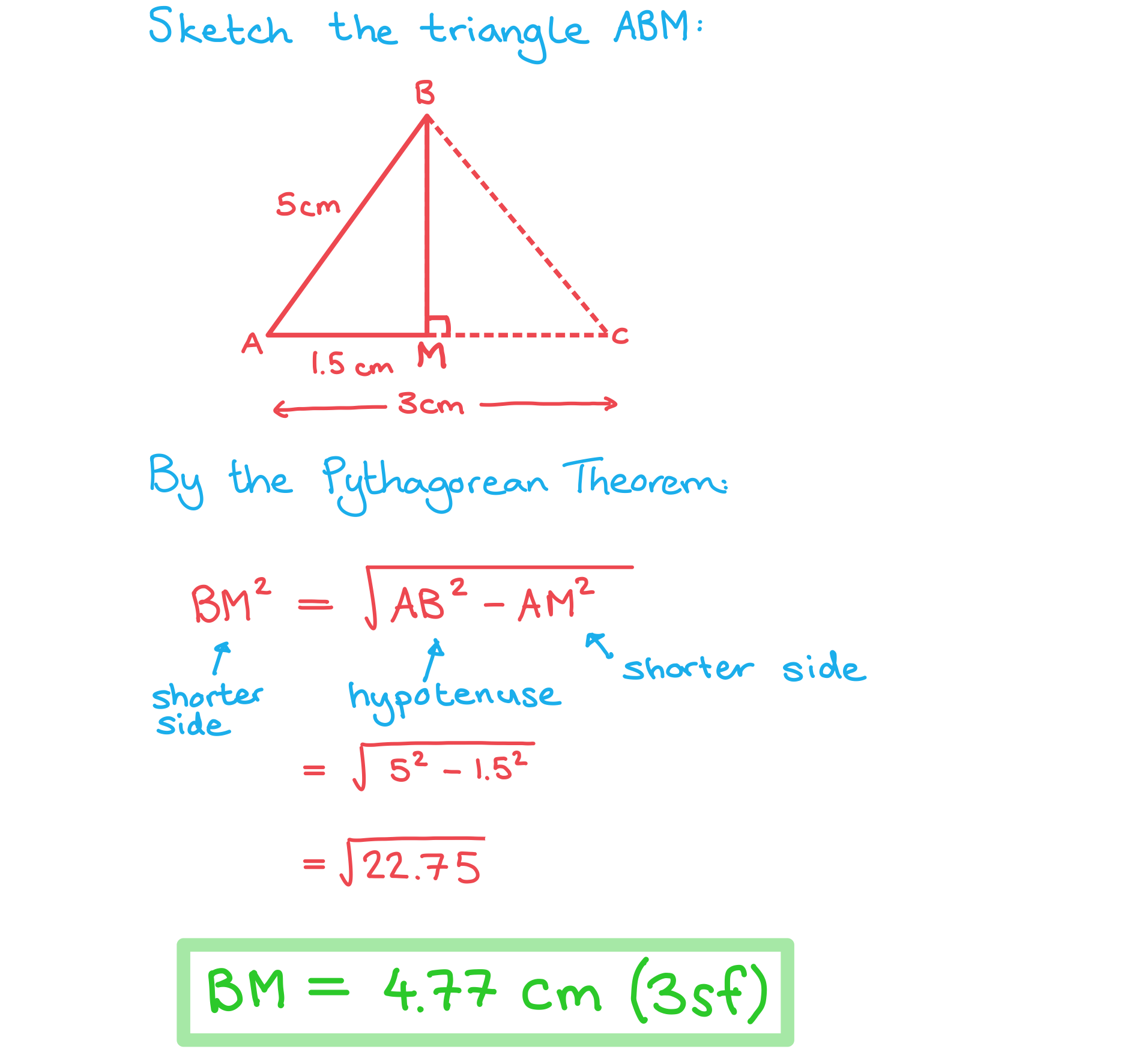
Worked example
Find the values of and
in the following diagram. Give your answers correct to 3 significant figures.
